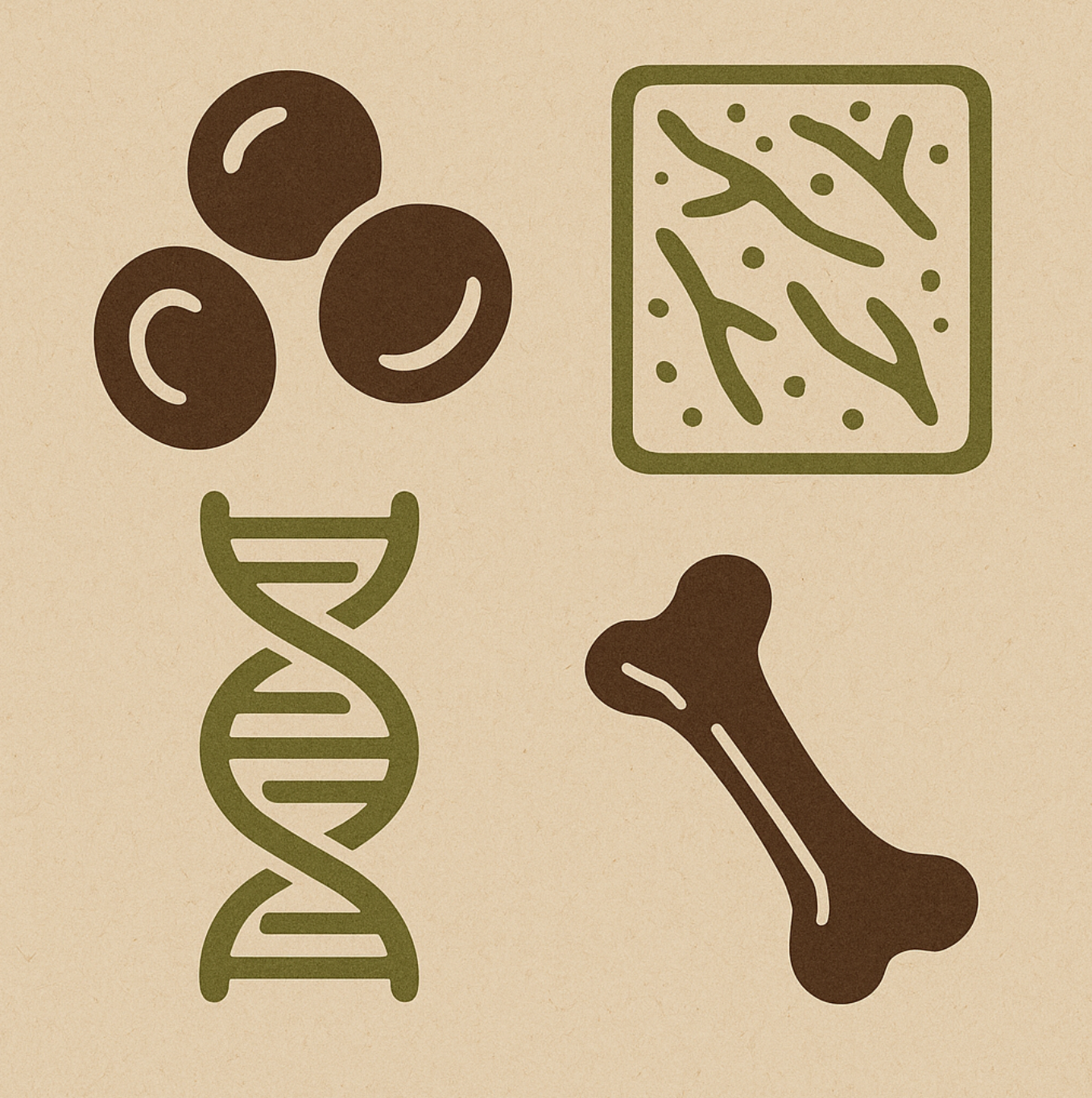List of Biomaterial Fossil Papers
Published on: March 27, 2025

Special thanks to:
- Brian Thomas, Ph.D. Paleobiochemistry (University of Liverpool)
- Bob Enyart of Real Science Radio (RSR)
For their extensive work in compiling and maintaining this list of biomaterial findings in fossils.
Peer-reviewed journal articles on surviving endogenous biological material including tissue and DNA
Review their list of references and check newer data sources. This data observationally shows that DNA cannot last for the claimed ages. This is powerful evidence against the evolutionary timeline.
🧾 Original source spreadsheet and documents list:
Their contributions have been instrumental in centralizing decades of peer-reviewed research that challenges the conventional understanding of fossil preservation and geologic timescales.
🦕 Introduction: Mary Higby Schweitzer’s Groundbreaking Discoveries
In the early 2000s, Dr. Mary Higby Schweitzer stunned the scientific community when she reported the discovery of flexible blood vessels, red blood cells, and soft tissue structures inside a Tyrannosaurus rex femur, purportedly 68 million years old. These findings—published in top-tier journals such as Science and Proceedings of the National Academy of Sciences—challenged long-standing assumptions that biomolecules degrade entirely within tens of thousands of years.
Her work ignited a renaissance in paleomolecular research, leading to re-examinations of many fossils previously assumed to be fully mineralized. This document catalogs dozens of peer-reviewed studies—many of which follow in Schweitzer’s footsteps—documenting the presence of proteins, DNA fragments, cartilage, collagen, and even potential chromosomes in dinosaur bones and other ancient specimens.
🧬 Why does this matter?
Under conventional decay rates, such biomolecules shouldn’t survive more than ~1 million years, let alone tens or hundreds of millions. The accumulation of these findings suggests either:
- Our understanding of biomolecular preservation is deeply flawed, or
- These fossils are far younger than currently believed.
🧪 Known Biomolecule Decay Rates
Scientific measurements of DNA decay under optimal conditions (cold, dry, neutral pH) still show a relatively rapid breakdown. The following table illustrates estimated DNA half-lives based on experimental data, especially the work of Allentoft et al. (2012), published in Proceedings of the Royal Society B.
DNA Decay Over Time: Corrected Estimates and Explanation
🧬 Exponential Decay Formula
To calculate the remaining percentage of DNA over time, we use the formula:
Remaining DNA (%) = 100 * (1/2)^(t / T)
Where:
t= time in yearsT= DNA half-life in years (521 years based on Allentoft et al., 2012)
This table shows how much DNA remains over time, assuming a half-life of 521 years:
| Time (years) | Remaining DNA (%) |
|---|---|
| 100 | ~87.4% |
| 1,000 | ~26.2% |
| 4,400 | ~0.27% (Flood estimate) |
| 10,000 | ~0.0000016% |
| 100,000 | ~3.7e-30% |
| 1,000,000 | ~1.1e-296% |
| 10,000,000 | Effectively 0% |
| 68,000,000 | ≪ 10⁻²⁰ % (Impossible) |
🧬 DNA's half-life is estimated at 521 years under ideal conditions. That means after 1 million years, over 99.9999% of DNA should be degraded beyond detection—yet some fossils in this document reportedly contain intact fragments or other biomolecular structures.
Reference:
Allentoft, M. E., et al. (2012). "The half-life of DNA in bone: measuring decay kinetics in 158 dated fossils." Proceedings of the Royal Society B: Biological Sciences.